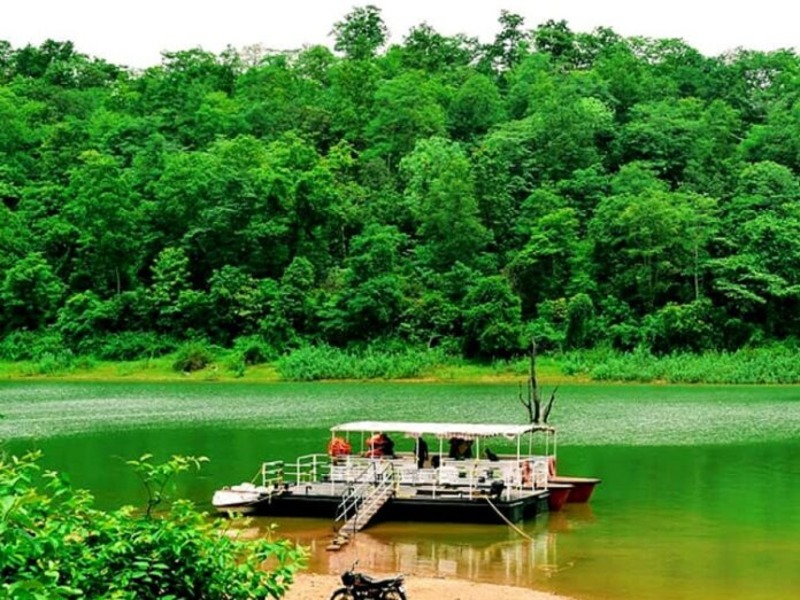Despite ongoing eco-tourism initiatives and afforestation projects in Telangana, environmental challenges persist. Rapid urbanization, industrial pollution, and diminishing groundwater levels continue to strain the state’s ecosystem. While green initiatives offer some relief, they fall short of addressing the broader issues that require comprehensive, sustainable solutions to protect Telangana’s environment.
The 2024 Telangana budget focuses on agriculture, welfare schemes, and infrastructure but loses sight of the environment. With ₹33,487 crores earmarked for capital expenditure, the Department of Forest and Environment walks away with a meagre share.
Despite targeted plans, the general lack of political will to tackle climate change in India is concerning many in the state renowned for its natural resources.
Budgetery Obligations
In his budget speech, Deputy Chief Minister Bhatti Vikramarka Mallu announced an allocation of ₹1,064 crores for the Department of Forests and Environment. This marked a significant 27.6 percent slash in the allocation from the BRS’s FY 2023-24 budget.
Revealing the government’s plans in the sector, he informed of three primary focus areas. Firstly, the development of Eco-Tourism at seven spots across the state. Second, the launch of an afforestation drive to plant 20.02 crore trees in Telangana, and third, increasing compensation from five to ten lakhs for deaths due to human-animal conflicts.
Speaking to #Khabarlive, Donthi Narasimha Reddy, a public policy analyst, stated that the Congress budget was substantially better than their predecessor’s. “Allocations have been reprioritised and better targeted,” he justified.
However, he expressed scepticism regarding masked concerns in terms of the fiscal burden on Telangana to repay debts and fulfil Congress’s poll promises.
Statewide Eco-Tourism
In his budget speech, Bhatti announced bolstering eco-tourism across seven locations in Telangana.
Amrabad Tiger Reserve, Kawwal Tiger Reserve, Vikarabad-Anantagiri Circuit, Kanakagiri in Khammam, Kuntala Falls in Adilabad, Kinnerasani in Kottagudem, and Pakala and Eturunagaram Circuit are the seven proposed locations.
However, it remains to be seen whether such tourism will regulate and monitor human movement effectively. States like Karnataka have implemented plastic ban along trek routes to ensure that harmful materials do not enter the zone. Similar measures will greatly benefit eco-tourism in the state.
New name, old scheme
Before the Congress ascended to power, the BRS introduced “Haritha Haram,” a flagship scheme bolstering afforestation in Telangana since 2015.
As part of renewed afforestation efforts, Bhatti announced the launch of “Vajrotsava Vana Mahotsavam.” Aiming to plant 20.02 crore trees statewide, it is virtually a rebranded “Haritha Haram.”
Under the fresh “Vajrotsava Vana Mahotsavam,” the 20.02 crore target has been assigned to three wings. The Municipal and Urban Development Department is responsible for planting 10.09 crore saplings, the major chunk. Additionally, the Rural Development Department is to plant 6.37 crore saplings and the Department of Forests is to plant 1.34 crore saplings.
As per the Telangana Socio-Economic Outlook 2024, the total saplings divided amongst departments makes 17.8 crore saplings. This generates a gap of 2.22 crore trees left unaccounted for.
The Telangana Socio-Economic Outlook 2024 reported 109 Urban Forest Parks under development. These include 59 within the Hyderabad Metropolitan Development Authority (HMDA) limits and 50 outside HMDA limits.
Where is Haritha Haram?
Narasimha Reddy draws a clear distinction between increasing greenery and increasing forest cover. “Haritha Haram focused on increasing greenery, not the forest cover,” he noted, adding that there was no planning document for the scheme.
“To top it off the state and central government keep diverting precious forest lands for other uses,” he added.
Referring to the Wayanad landslides, Narasimha Reddy stated that studies from Kerala suggested that 59 percent of the landslides in Kerala occurred in areas where forests were replaced by plantations.
“They set a target for themselves but didn’t audit the resources necessary to reach it. When the nurseries were unable to provide saplings, they had to spend the budget on importing saplings from other states,” he recounted.
Stating that the government has merely changed the name, he posited that it remains to be seen how much the new regime can increase the forest cover.
Infra push
Interestingly, Hyderabad secured ₹10,000 crores in the 2024 state budget. With announcements of various projects across the city, there is renewed apprehension about its environmental costs.
A major project, among the priorities of the Congress regime, is the Musi Riverfront development project. The government aims to emulate the Thames Riverfront Project in London to develop over 110 kilometres of urban area.
Allocating a whopping ₹1,500 crores to the project, Bhatti announced an eco-friendly approach to the large-scale development. However, with plans for public plazas, theme parks, and recreation and entertainment zones, a sustainable eco-friendly approach is a tough walk.
Similarly, Bhatti also proposed the extension of metro services to Old City and Shamshabad Airport apart from expanding existing lines. Enhancing public transit is beneficial in reducing net carbon emissions. However, construction at such a scale will have significant ecological costs.
However, there is no mention of controlling pollution or mitigating the effects of rapid infrastructure development.
“It’s usual for the government to commit such destructive atrocities in the name of development,” Narasimha Reddy opined. Criticising the budget, he stated that it lacked a vision. Pegging the new regime as both a boon and a bane, he said that the government would lose out on its bad habits, what it gains from fresh ideas.
“There is a need for a massive overhaul. The government needs to enhance transparency, widen public consultation, and strengthen institutions to succeed,” he said. #hydkhabar

